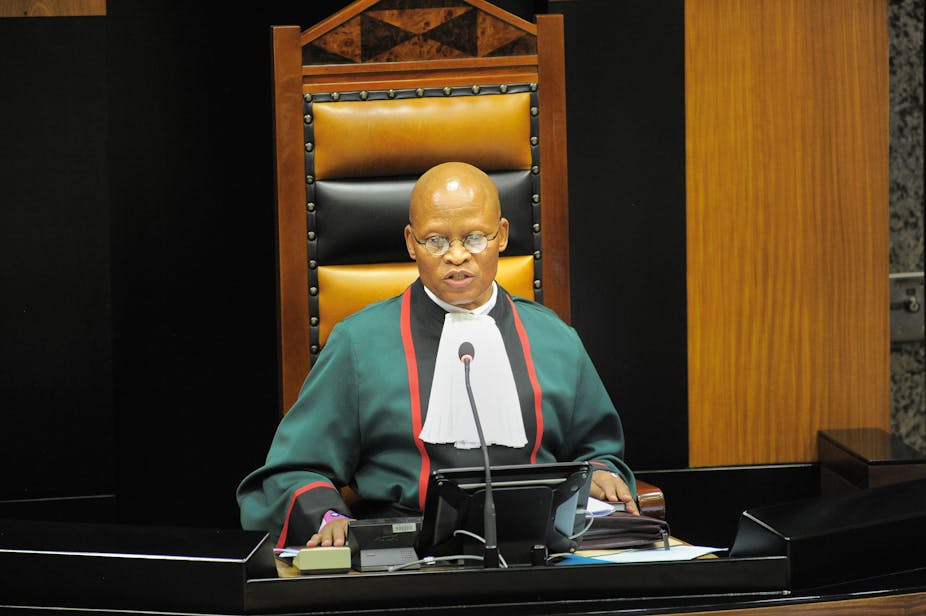A recent decision by South Africa’s Constitutional Court on the right to peaceful protest has drawn renewed attention to its role in safeguarding the country’s democracy. In declaring a section of the Regulation of Gatherings Act partly unconstitutional, the Court confirmed its function as a protector of democratic rights.
But, how in general should we measure the success of a constitutional court when it comes to protecting democratic rights?
The answer isn’t straightforward because there are conflicting views about the standard we should use.
For most lawyers, constitutional courts’ success in protecting democracy should be measured by their jurisprudential record - their performance according to legal professional standards of appropriate decision-making.
On this view of things, courts are essentially reactive institutions. The only power they have to influence the quality of democracy is to interpret democratic rights in the cases they happen to be asked to decide.
For many political scientists, this legalistic measure is inadequate. What needs to be assessed is the actual impact of a court’s decisions on the overall quality of democracy.
On this alternative account, constitutional courts have much greater agency than lawyers give them credit for. They should be seen as political institutions with the capacity to adjust their decisions according to their likely effects.
The Colombian Constitutional Court, for example, famously thwarted President Alviro Uribe’s bid for a third term. In a bold decision, the Court correctly calculated that it had sufficient institutional legitimacy to stand up to a charismatic politician.
The political science account represents a more realistic picture of the discretion constitutional courts enjoy in shaping the law. The problem, however, is that it is difficult to assess the influence of any particular decision on democratic health. There are just too many intervening variables.
Thus, for practical purposes, we are forced back to assessing constitutional courts’ performance by looking at their record in interpreting democratic rights. But this doesn’t mean we have to treat them as reactive institutions. The key to appreciating their role in safeguarding democracy is to fuse the sense lawyers have of their duty to decide cases according to law with a political science perspective.
Track record
Every time a court decides a case it not only settles the issue in dispute but also invites other types of litigation. That happens because the court’s interpretation of the law in one case sends out signals about how it’s likely to interpret the law in the next.
A constitutional court, on this understanding, has the power either to play itself into the business of safeguarding democratic rights or play itself out. It plays itself in when it takes a decision that enhances its capacity to take further decisions protective of democracy. It plays itself out when its decision forecloses that possibility.
Judged by this more nuanced measure, South Africa’s Constitutional Court has performed remarkably well since 1995.
The major threat to South Africa’s democracy during this time has been the governing African National Congress’s entrenchment as a dominant political party. Denied the sunlight of regularly rotating governments, South Africa’s democracy has developed certain well-known pathologies.
Faced with this situation, one approach the Constitutional Court might have taken would have been to decide cases according to its assessment of the threat posed by the ANC to South Africa’s democracy. But this approach would have undermined the special legitimacy the Court enjoys as a legally constrained actor, and exposed it to political attack.
Instead, what the Court has done has been to progressively expand the scope of its authority. In small, incremental steps, it has built public understanding of its legitimate power to review all aspects of the democratic process, from the quality of democracy within political parties to the functioning of the legislature.
The best-known recent example of this was the Court’s ruling that the National Assembly’s failure to make rules regulating the removal of a President in terms of section 89(1) of the Constitution violated that provision.
The majority decision in this case provoked a forceful response from Chief Justice Mogoeng Mogoeng. He argued in dissent that the Court’s insistence that an inquiry should always be held before impeachment violated the separation of powers.
Mogoeng’s dissent shows that the question of the appropriate scope of the Court’s authority is always legally fraught. But it also shows how creative the Court has been in pushing the limits of its authority to protect the democratic system.
Oiling the wheels of democracy
This, in conclusion, is arguably what constitutional courts established on the liberal-democratic model have to do. The current populist threat to democracy is not coming out of thin air. It exploits a sense, however unjustified, that liberal constitutionalism has failed a large section of the population.
To counteract this threat, constitutional judges need to demonstrate that they are not on the side of the status quo. Rather, their role is to support democratic social change, wherever that might lead.
Ultimately, this is what the Court’s recent judgment protecting the right to protest was about. By protecting the applicants’ right to demonstrate, the Court oiled the wheels of democracy as the primary vehicle of peaceful social transformation.

